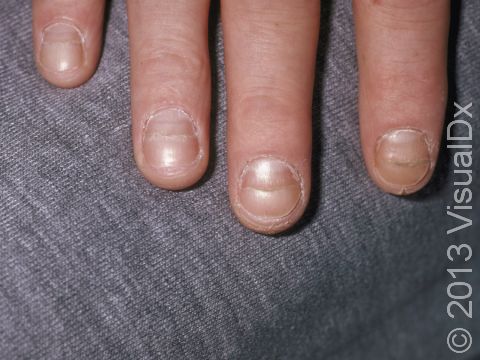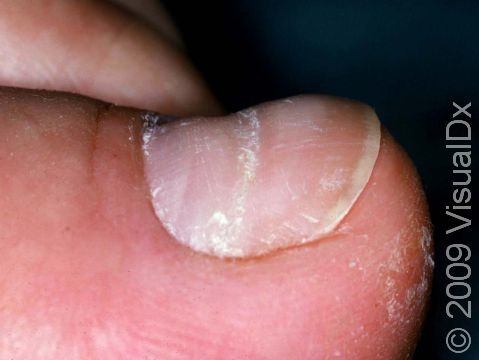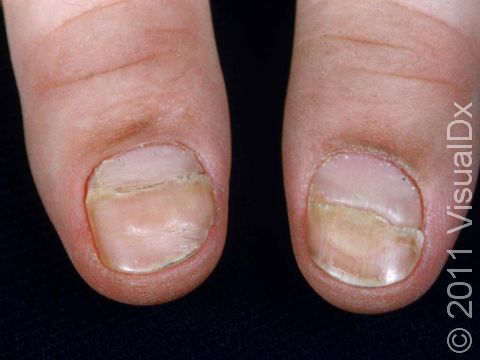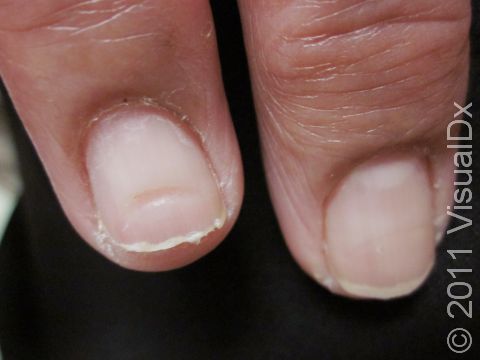Beau's Lines
Beau’s lines are horizontal (transverse) depressions in the nail plate that run parallel to the shape of the white, moon-shaped portion of the nail bed (lunula) seen at the nail’s origin. They result from a sudden interruption of nail keratin synthesis and grow distally with the nail plate. As the nail grows, the Beau’s lines can disappear.
Beau’s lines can be caused by trauma or local disease involving the nail fold. They can vary based upon the width or depth of the depression, reflecting the duration or extent of the damage. When Beau’s lines are present in all nails at a similar location on the nail plate, they are likely to have a systemic cause. They may also result from metabolic, inflammatory, or traumatic influences.
Who's At Risk?
People of all ages and ethnic backgrounds can have Beau’s lines. Most commonly, they are seen in chemotherapy patients in reaction to a drug.
Signs & Symptoms
Beau’s lines occur along the fingernails and the toenails. The grooves extending across the nail plate often span its entire breadth. The involvement of multiple nails may suggest a systemic cause, including a side effect from medication, but the phenomenon may be limited to just the thumb nails and big toe nails.
It is possible to measure the distance from the area where the cuticle is seen and where the nail originates (the proximal nail fold) to the leading edge of the Beau’s line to determine how much time has elapsed since the line was formed. Because fingernails grow at a rate of approximately 0.1 mm per day, and toenails grow 0.03 mm per day, the duration of the causative insult can be inferred from the width of the Beau’s furrow itself.
Recurrent disease will produce repeated transverse grooves, separated by normal nail.
Self-Care Guidelines
None necessary.
Treatments
Beau’s lines are a retrospective indicator of various causes, and your physician may investigate for possible causes.
Visit Urgency
If nail changes, such as depressions in the nails, are noted, it may be helpful to seek evaluation from a primary care provider or dermatologist.
Trusted Links
References
Bolognia, Jean L., ed. Dermatology, pp.1027, 1061-1062, 1069. New York: Mosby, 2003.
Freedberg, Irwin M., ed. Fitzpatrick’s Dermatology in General Medicine. 6th ed, pp. 13, 657, 664, 1340. New York: McGraw-Hill, 2003.
Last modified on October 10th, 2022 at 4:06 pm

Not sure what to look for?
Try our new Rash and Skin Condition Finder




